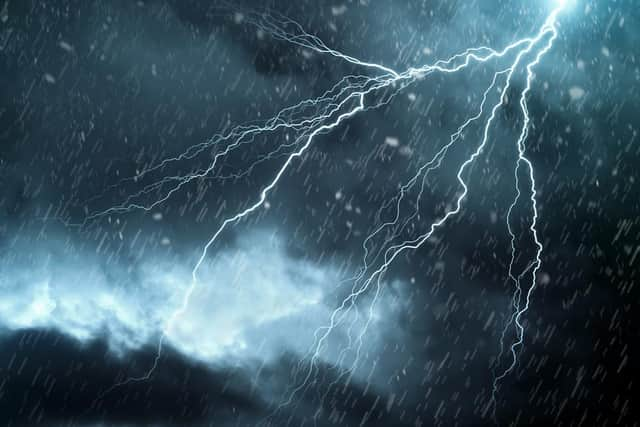What is Thundersnow? The rare winter storm condition explained
Plenty of residents took to social media shortly after 4.40am to record the two loud cracks, believed to be caused by thundersnow.
A rare combination of wintry conditions can cause the unusual phenomenon, which is brighter, but quieter than usual thunder and lightning strikes.
So, what exactly is thundersnow, and what causes it?


What is thundersnow?
Advertisement
Hide AdAdvertisement
Hide AdThundersnow occurs when the air closest to the ground is warm enough to rise and form a thunderstorm, but still cool enough that it’s able to freeze into snow.
According to the Met Office, thundersnow is formed when thunderstorms “give rise to heavy downpours of snow” in wintry conditions.
“This, along with the usual thunder and lightning, is called 'thundersnow',” it added.
Why is thundersnow so bright?
“Thundersnow is unusual only because it can only occur in a few months of the year,” the Met Office explained.
The lightning can bounce between the flakes of snow.
“When thundersnow occurs at night the lightning appears brighter - this is because the light reflects off the snowflakes.”
Why is thundersnow quieter than thunder?
The snow contained within the thunderstorm acts to dampen the sound of the thunder during a thundersnow event.
According to the Met Office, while the thunder from a typical thunderstorm might be heard many miles away, the thunder during a thundersnow event “will only be heard if you are within 2 to 3 miles of the lightning.”
A message from the Editor:
Thank you for reading this article. We're more reliant on your support than ever as the shift in consumer habits brought about by coronavirus impacts our advertisers.
If you haven't already, please consider supporting our trusted, fact-checked journalism by taking out a digital subscription.
Comments
Want to join the conversation? Please or to comment on this article.
